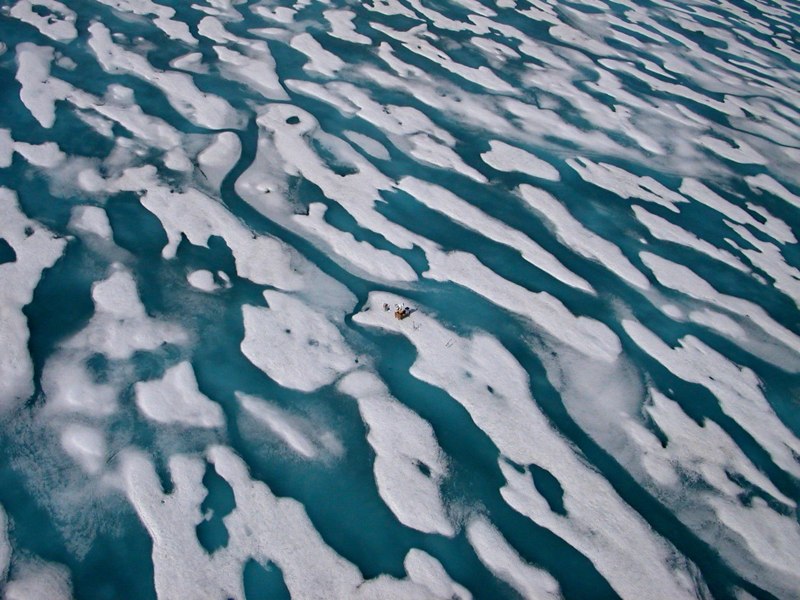1 April 2013
Diminished Arctic sea ice threatens communities in northern latitudes
Posted by kramsayer

Melting sea ice negatively impacts Arctic communities, a panel of experts said at a recent congressional briefing. (Credit: Brent Else)
By Sarah Charley
Melting Arctic sea ice is threatening local communities and Arctic habitats, experts stressed at a congressional briefing on March 20. The American Geophysical Union co-hosted the briefing to help inform members of Congress and their staffers about the state of the Arctic and the repercussions of sea ice loss due to global warming. The experts stressed that the consequences are already evident in Arctic communities, and will continue to compound as more sea ice is lost.
“We are in unique times,” said John E. Walsh, chief scientist at the International Arctic Research Center in the University of Alaska Fairbanks. “The increase in Arctic temperatures is more than double the global increase over the last century and is unprecedented in the long-term, 2,000-year timescale.”
Sea ice acts as a storm buffer and stymies Arctic weather events. As the sea ice melts, Arctic communities are at greater risk for flooding and erosion, Walsh said.
“There are villages along the Alaskan coast…literally threatened down to the infrastructure level to the point where they are considering re-location,” Walsh said.
Also, with less summer sea ice to act as a base, the ice that forms in the winter months is thin, brittle and melts earlier in the season.
“Hunting and fishing activities that the communities have been engaging in for centuries are challenged because the ice is unstable and dangerous,” Walsh said.
Brendan P. Kelly, a biologist and the assistant director for polar sciences for the White House, said he is concerned the loss of summer sea ice will destroy the rich cultural history and biological diversity of Arctic communities. “The Arctic is not a barren wasteland,” Kelly said. “Its riches have supported human inhabitants for millennia. In fact, for over 10,000 years.”
But an ice-free Arctic has implications beyond climate and habitat change. Without the ice, the Arctic is an exposed and open ocean—and one which is partially under the United States’ jurisdiction.
“We’re an Arctic nation, and the Alaskan Arctic is part of our waters,” said Lt. Commander Kenneth J. Boda of the U.S. Coast Guard. “As the Coast Guard we protect [the Arctic waters].”
An open Arctic will present opportunities for shipping and drilling, he said — but it’s still a dangerous environment. “Just because the sea ice is diminishing does not mean that the sea ice is not a problem,” Boda said. “The ice is drifting quite a lot more than expected.” And the shifting ice can damage equipment and trap ships between ice floes.
In addition to remaining cautious about the opportunities, Boda emphasized that protecting the culture and habitat of the Arctic is the U.S. Coast Guard’s No. 1 priority in that region.
“Putting the ecosystem and survival of species first is really the key to future development in the Arctic,” Boda said.
— Sarah Charley is AGU’s science writing intern


 GeoSpace is a blog on Earth and space science, managed by AGU’s Public Information staff. The blog features posts by AGU writers and guest contributors on all sorts of relevant science topics, but with a focus on new research and geo and space sciences-related stories that are currently in the news.
GeoSpace is a blog on Earth and space science, managed by AGU’s Public Information staff. The blog features posts by AGU writers and guest contributors on all sorts of relevant science topics, but with a focus on new research and geo and space sciences-related stories that are currently in the news.